What is a Margin Rate in Stocks? Complete Guide
For long-term trades that last more than 30 days, margin rates are charged on the 16th or the last day of the month. The money that the investor borrows is referred to as the margin. The margin rate is how much the broker charges to borrow that money.
- This type of price action could be related to the announcement of a shelf offering or the execution of an “at-the-market” sale from…
- And if the stock price spirals even further to, say, $10 a share?
- If the value of the stock falls by 20% to $8,000, your account equity falls to $3,000 (remember, all the losses come out of your equity portion).
- Forex accounts are not available to residents of Ohio or Arizona.
Be aware that some brokerages require you to deposit more than 50% of the purchase price. In finance, the margin is the collateral that an investor has to deposit with their broker or exchange to cover the credit risk the holder poses for the broker or the exchange. An investor can create credit risk if they borrow cash from the broker to buy financial instruments, borrow financial instruments to sell them short, or enter into a derivative contract. Under Reg T, a Federal Reserve Board rule, you can borrow up to 50% of the purchase price of securities that can be purchased on margin, also known as initial margin. Some brokerages require a deposit greater than 50% of the purchase price. Brokers typically present margin rates as an annual percentage rate (APR).
Trading on margin means borrowing money from a brokerage firm in order to carry out trades. When trading on margin, investors first deposit cash that serves as collateral for the loan and then pay ongoing interest payments on the money they borrow. This loan increases the buying power of investors, allowing them to buy a larger quantity of securities. The securities purchased automatically serve as collateral for the margin loan. Suppose you want to buy 100 shares of XYZ stock currently trading at $60 per share.
How margin trading works
There may not be a fixed repayment schedule, and your broker’s maintenance margin requirements may be simple or automated. For most margin accounts, the loan is open until the securities are sold in which final payments are often due to the borrower. A margin call is effectively a demand from your brokerage for you to add money to your account or close out positions to bring your account back to the required level. If you do not meet the margin call, your brokerage firm can close out any open positions in order to bring the account back up to the minimum value.
By trading on margin, the investor doubled her profit with the same amount of cash. Here’s an illustration of how margin trading can magnify your losses. Your broker will charge interest on this loan you’re using, which you’ll need to repay. If you sell your securities, the proceeds will pay off your loan first, and you can keep what’s left. In a general business context, the margin is the difference between a product or service’s selling price and the cost of production, or the ratio of profit to revenue.
Short squeezes can introduce a lot of volatility into stocks and send share prices sharply higher. These squeezes offer opportunities for trading, but they often require different strategies and more caution than traditional breakouts. Also keep in that even when trading in a margin account, no margin is charged unless you are utilizing the actual leverage provided.
And don’t forget, the whole time you’re holding a margin loan balance, you’re incurring interest on that amount. Margin rates can fluctuate depending on US monetary policy, and particularly the federal funds rate – the rate at which banks can lend to each other. As interest rates rise or fall, margin rates also tend to rise or fall.
What is a Shelf Offering?
The primary reason investors margin trade is to capitalize on leverage. Margin trading centers increasing purchasing power by increasing the capital available to purchase securities. Instead of buying securities with money you own, investors can buy more securities using their capital as collateral for loans greater than their capital on hand.
In a cash account, this trade would require you to put up the full cost of the trade, or $6,000. By contrast, a margin account allows you to borrow half of the cost of the trade from your broker. In this case, you would put up $3,000 to own $6,000 worth of stock. This activity would also be subject to applicable fees, commissions, and interest. Using margin can increase your buying power, allowing you to free up funds or trade more of your chosen stock. Margin trading is when investors borrow money to buy stock.
However, rates tend to be similar across brokers since they’re all competing to attract traders. In this example, borrowing $10,000 of margin for 5 days would cost $9.72. In this guide, we’ll explain everything you need to know about how margin rates work. In December 2020, it cut margin rates from 5% to 2.5% for its premium customers. It even gives these customers the first $1,000 in margin interest-free.
Buying on Margin: Is It a Good Idea?
For example, January 2024 CME Group WTI Crude Oil futures required initial margin of $12,342, or roughly 17% of the total contract value. The contract was trading around $72 per barrel in mid-December 2023, meaning one futures contract covering 1,000 barrels of oil had a notional value of about $72,000. Brokers are competing for customers, https://www.tradebot.online/ so it’s in their interest to offer competitive margin rates. Since margin is effectively a loan from your broker, it comes with an interest rate. You can typically find the margin rates for your brokerage on your brokerage’s website or in fee disclosure documents. Interactive Brokers charges for some features that Fidelity doesn’t.
Understanding Portfolio Margin
The same reason an investor does anything — it gives them the chance to make more money. However, if things do not go well, you could also lose your proverbial shirt. Buying investments on margin always involves more risk. Buying on margin is borrowing money from a broker in order to purchase stock.
Initial Margin
You will only be dealing with margin rates if you have opened a margin account. Investors looking to amplify gain and loss potential on trades may consider trading on margin. Margin trading is the practice of borrowing money, depositing cash to serve as collateral, and entering into trades using borrowed funds. Through the use of debt and leverage, margin may result in higher profits than what could have been invested should the investor have only used their personal money. On the other hand, should security values decline, an investor may be faced owing more money than what they offered as collateral. Unlike margin on stocks or portfolio margin, margin on futures and forex trading is not a loan.
When you first take out a margin loan, you need to have a minimum amount of equity in your account to borrow on. The Financial Industry Regulatory Authority (FINRA) sets this rate at 50%. You can borrow less than 50%, but you can’t borrow more. This rate varies much more than margin rate, depending on the borrowing demand. The borrow rate can even change over the course of the day.

